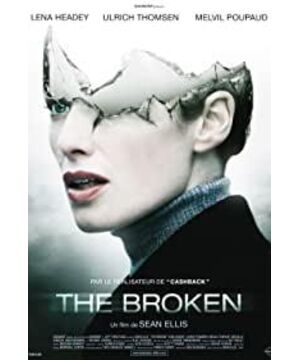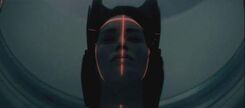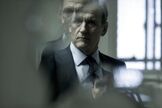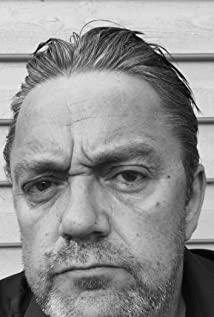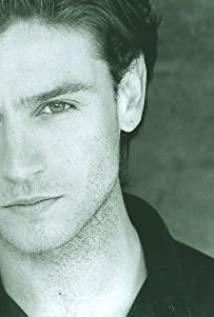For this second feature film written and directed by Ellis, some critics said: "Director Sean Ellis is good at creating imaginative and impactful films. However, the arrangement of the story line and the layout of the plot are his weak points.” This evaluation is very pertinent, and Ellis’s creativity and characteristics in audio-visual aspects have been well received by the audience in the short film and “Sleepless Supermarket”. I have felt in the feature films, the extraordinary imaginary worlds and the fresh and wonderful composition of the pictures make the viewing process a pleasing visual journey.
In this "Desire of Destruction", which Ellis has edited several drafts, its shooting techniques are still outstanding, the composition is unique and rich, the scene switching is clean and smooth, and the penetration or overlap of the pictures is used to advance and deconstruct the plot, such as the collision of cars. When the plot progresses to the point where it is necessary, it also reproduces the details of the collision between two cars with different angles and perspectives. For another example, the distance and intensity of the lights are used to highlight the strangeness of the scene and the tension of the characters. Feeling.
Although the film still has considerable advantages in terms of vision, the main plot of the film is relatively simple after the smoke and fireworks are removed, and there is a slight delay in the narrative rhythm, which may be related to its excessive resort to video style. . However, even with these small problems, as a thriller, "Destruction" still has a lot of merits, at least it is better than the excellent creation and contrast of a specific environment atmosphere.
If you are a little more careful, you will find that the film not only has horror, suspense, blood and violence, and it is not only dazzling with visually striking images, but also has a certain degree of introductory in exploring the source of human horror and fear. . The whole film is like an endless dream that can't wake up, even nightmares, and there are obvious dreams in dreams. The actions of people in dreams seem to reveal the multi-faceted and secretive nature of human nature. The gloomy atmosphere and the occasional multi-perspective shooting have rendered a mysterious world with a strange aura that is different from the daily habit. For example, when the protagonist Gina (played by Lena Headey) is bathing or running in the subway passages, the camera often haunts, focuses behind or around her, making a kind of gradually enriched and approaching extreme fear and panic always linger in Gina. The surroundings of Na are also presented in front of the audience.
I'm glad Ellis cast Richard Jenkins in the role of his father. Although it's a supporting role, this role is by no means an optional addition to Jenkins' long acting resume. In the film, the widower John (Jenkins played the widower again), as a staff member of the US embassy in the UK, is engaged in a variety of boring and inaccurate tasks every day, which seems to imply that he has some psychological characteristics, such as he is a A very vigilant and suspicious person. As soon as Jenkins appeared on the stage, he hinted at the psychological level of the play with his restrained and self-controlled performance. The sophistication of his expression and the simple pause of his demeanor seemed to indicate that the play had demands on the psychological level of people, at least he wanted to. audience to ponder.
There are always scenes such as mirror images and glossy reflections in the film. The characters' daily life world is often reflected in the mirror, and what is shown in the mirror is actually much more than what the naked eye can see. Perhaps, in Ellis's interpretation , the mirror that people can see with the naked eye is only a beautiful appearance that is most accepted by the world, and the mirror actually reflects the other side of oneself, such as the darker side.
The mirrors in the film are often in a state of sudden shattering, which is not so much an ominous sign, but rather that the shattering seems to have released the hidden side of the human beings that the mirror saw and imprisoned, while the walls The remaining mirror fragments also reflect different angles of the same face, because the reflection points of the fragments have changed a lot, so those faces look distorted and deformed. Which of them is the most real? In this sense, Ellis's mirror reflects all corners of the human mind, including those well-wrapped dark places.
In addition, Ellis, who has quite an artistic reputation, seems to have a point of view that he wants to convey through this film, that is, to refute a conventional point of view-art workers are often prone to psychological outbursts, and there are even many people with split personality. What Ellis is trying to say seems to be that this kind of split is not exclusive to artists, and sometimes people who are engaged in the most rational work can also cause psychological failures due to excessive depression, excessive rationality, and excessive self-discipline.
In the film, Gina's younger brother Daniel is a painter. Although he sometimes seems strange, he is as sluggish as he is in the studio with his paintings, and ignores the greeting of his girlfriend Kate when he enters the door. In fact, in the film, Daniel is not. He is the most mentally sound one, and other non-art professionals, whether doctors, architects or civil servants, hide an unknown side under their usual performance. Perhaps Kate's sweet smile has more impulses. ...At the end of the film, Daniel went to the hospital to find Gina. The moment he saw his sister, he turned around and ran because he saw the doorway...
http://nicolew.blog.hexun.com/30952642_d.html
View more about The Broken reviews


